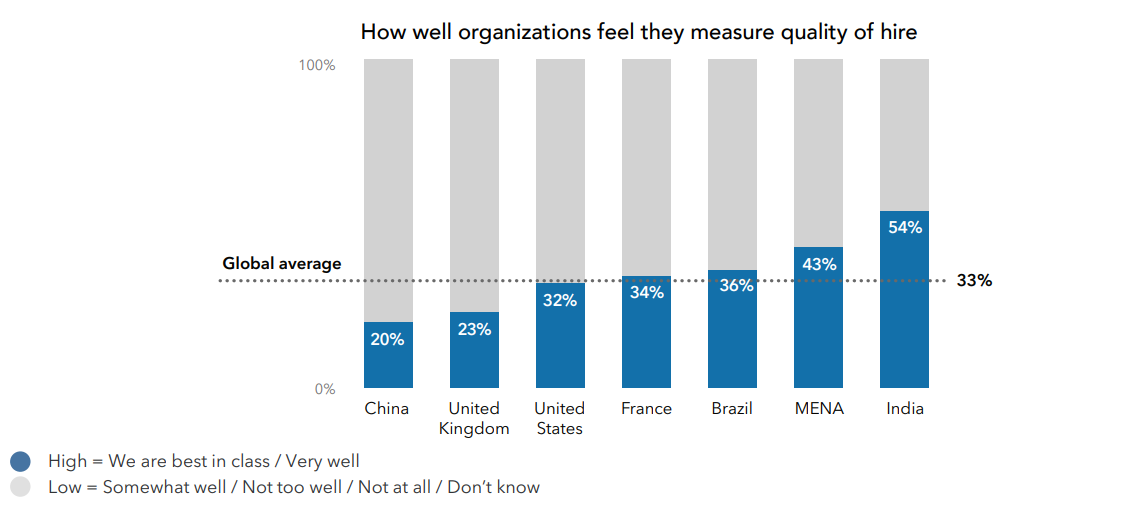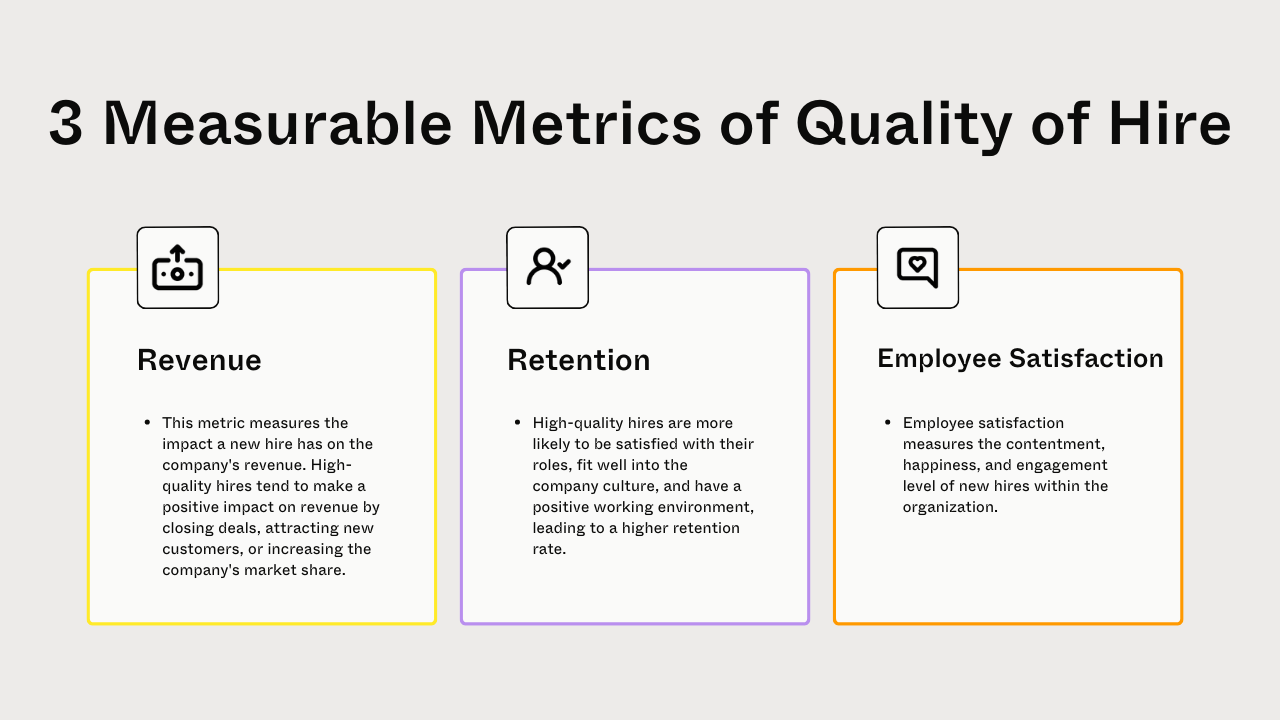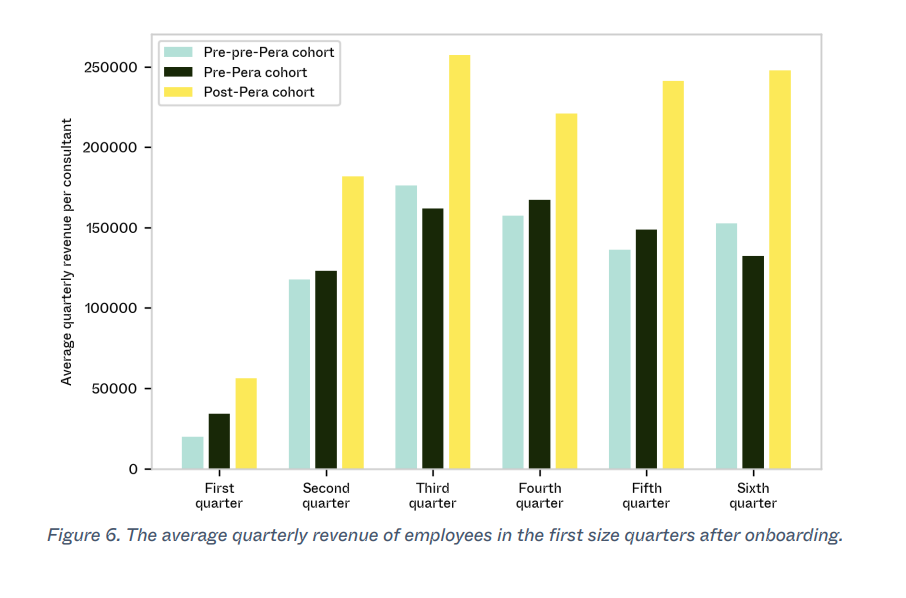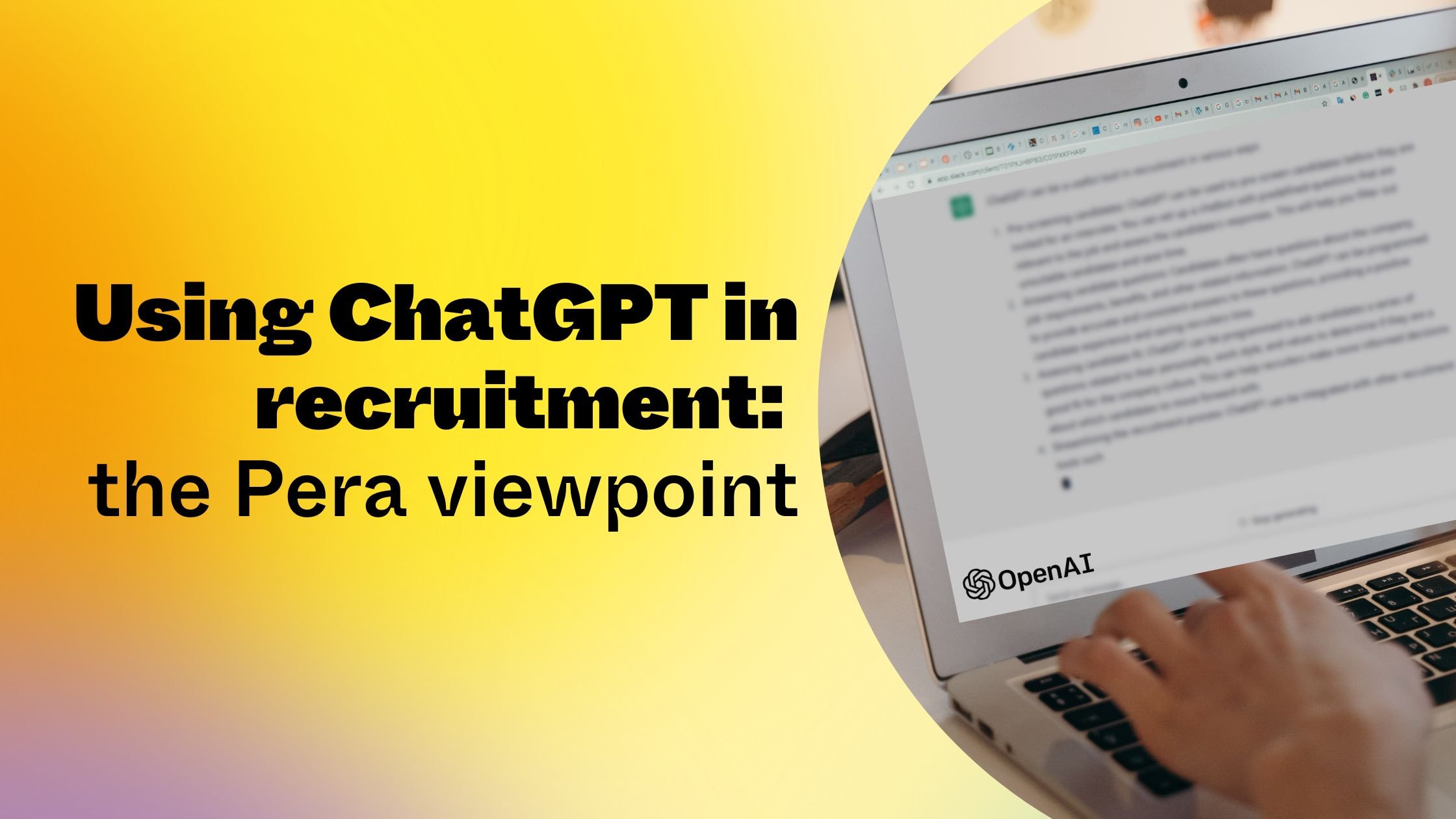The Balancing Act: How to Achieve Quality of Hire with AI in Today's Competitive Job Market
4 August 2023
Do you know a quality candidate when you meet one? Indeed, but the real challenge lies in defining what truly makes a candidate exceptional.
How do you define a good candidate versus a great one?
In today's fiercely competitive job market, finding top talent and ensuring a high-quality hire has become a daunting task for employers. According to LinkedIn’s 2016 global trends report, leaders lack confidence in measuring quality.

Only 33% of respondents feel that their methodologies are strong, and an even smaller 5% felt “best in class.” Therefore, there’s a lot of opportunity to improve how you calculate and present the quality of hire.
In this blog, we delve into the complications of identifying top-tier candidates and present Four Fundamental Steps to Improve Candidate Quality.
Step 1: Establish a Clear Definition of Quality with the Hiring Manager
One of the cornerstones of improving candidate quality is establishing a clear and detailed definition of what comprises excellence in the eyes of the hiring manager. Collaborative discussions between recruiters and hiring managers are vital to align expectations and set achievable performance goals. These goals must be measurable, objective, and capable of being verified by multiple stakeholders.

With the unique Pera Skope method, we model and predict business impact based on objective outcomes like revenue, retention, and employee satisfaction.
Step 2: Leverage Data to Identify Patterns of Excellence
Data-driven insights are invaluable in the search to define and identify exceptional candidates. By analyzing the performance of successful employees over an extended period, organizations can discern patterns and attributes that contribute to their excellence.
With the help of Pera Skope, you can create unique post-hiring benchmarks that evolve and adapt based on real-world job performance.

Step 3: Comprehensive Evaluation Beyond Checklists
Quality candidates are more than just a checklist of qualifications. Consider a comprehensive evaluation that delves into competencies and potential job performance. Instead of solely focusing on specific criteria, strive to understand the candidate's overall fit within the organization and their contribution towards the success of the business.
Step 4: Use AI for Objectivity and Insight
Integrating AI algorithms into the recruitment process presents a practical and valuable opportunity. AI can analyze vast amounts of data, access the Pera Skope and combine the latest in AI with the largest database of competency and performance data. Our Pera Skope, for instance, offers insights into a candidate's competencies and job performance potential across multiple dimensions. Moreover, AI has the potential to minimize bias, making the hiring process more objective and scientific.
The predictive power of the Pera Skope
The post-Pera hires generated approximately 50 per cent higher than the accumulated revenue of previous cohorts.

Conclusion
Defining and identifying exceptional candidates is a multifaceted process that requires a blend of collaboration, data analysis, comprehensive evaluation, and AI integration. By following the Four Fundamental Steps to Improve Candidate Quality, recruiters can enhance their ability to spot candidates who not only meet the requirements but also have the potential to elevate the organization to new heights.
In a competitive job market, where the search for exceptional talent is a constant effort, embracing these steps can make all the difference in building a high-performing and diverse workforce. So, the next time you're faced with the question of what sets a good candidate apart from a great one, remember that the answer lies in a strategic combination of insights, collaboration, and cutting-edge technology.





